When I go outside this summer I’m impressed by the amount of greenery. I don’t have data, but it’s the greenest summer–the largest volume of foliage–I remember.
This makes sense. The limiting factors for photosynthesis, Biology 101 tells us, are temperature, light, and carbon dioxide. Translating photosynthesis into plant growth–that is, new biomass–also involves availability of water and soil nutrients, such as nitrogen.
This growing season has been, day after day, one of the most consistently warm years–hot, I’d say–that I remember.
As for sunlight, I doubt that one summer is a lot different from another. Certainly, day length is the same from one year to the next. There may be a few more cloudy hours one year than another, but all in all I suspect that the light this year has been about the same as last year or the one before.
Water, though, I think may have been in better supply than usual. I haven’t tried to check weather station figures, but from my own rain gauge and how often our garden needed water, it seems to me that we’ve had a lot of well-spaced soaking rains.
Nitrogen is sometimes a limiting factor for plants, including several field crops. I don’t know that it was any more or less abundant this year. Nitrogen compounds from agriculture are generally increasing in the environment. For some plants an increase in nitrogen could encourage growth; however, many plants have modest soil nitrogen requirements. Included are many prairie species. For such species, a lot more nitrogen doesn’t increase production.
However, the compound nitrous oxide is increasing in the atmosphere as a result of current agricultural practice. Nitrous oxide is a powerful greenhouse gas, so it’s likely that more nitrous oxide is a part of the equation for global climate change in general.
More influential though is the increase in atmospheric carbon dioxide. As everybody knows, the concentration of carbon dioxide in the atmosphere has gone steadily up, probably since early in the Industrial Age and certainly since 1958, when the systematic recording of atmospheric carbon dioxide began. Lately, the concentration has been rising about 3% per year. This implies a doubling in about a quarter century, roughly one human generation.
So, maybe high temperatures, lots of rain, and more carbon dioxide than ever made 2010 a banner year. My guess is that the luxuriant growth this year is mostly tied to the warmer summer and the plentiful and effective rainfall. The carbon dioxide level would have only have changed a couple of parts per million from last year.
However, increased carbon dioxide is probably the primary agent for a great increase in the growth of some plants in the past decade or more. I’m thinking particularly of the vines, specifically the lianas–vines that can spread across the ground but can also climb trees. Poison ivy, the several species of grapes, and Virginia creeper are native examples of lianas. There are a number of introduced lianas that are invasives in some natural areas. Local examples are Asian bittersweet and European ivy.
A little more than twenty years ago, a friend asked me whether I thought that wild grapes were a serious pest in local forests; specifically, how frequently did they climb into the crown of a tree and kill it by shading its leaves? I had spent a lot of time in beech-maple forests and told him that in my experience such a thing was rare. I went on to say that having a tangle of grapes in the forest canopy had its benefits, among them providing cover for barred and horned owls to hide from crows and blue jays.
No more than five years later my advice would have been different. At least by the mid-1990s, the grapes, Virginia creeper, and poison ivy were creeping up tree trunks in much greater numbers and the trees were suffering. These trends continue.
Lianas are, of course, a prominent life form in the forests of the Tropics, and it’s possible that their success here in recent years is just one more result of global climate change. But temperatures are erratic. The general trend in this part of the world is up, but any given year may be unchanged or even down. Carbon dioxide, by contrast, is a little higher every year. My guess fifteen years ago when I began to notice the increased liana growth was that it was related to increased atmospheric carbon dioxide. Research in the past few years supports that hypothesis. This link is to a study of poison ivy.
Despite what’s been happening with the lianas, my impression is that most herbs and shrubs within the forest didn’t join in this year’s burst of growth, not the way plants of the edges and the open spaces have. Perhaps this makes sense too. In the forests, the limiting factor for plant growth most of the time is light. Despite our atmosphere’s extra carbon dioxide, despite this year’s good supply of water and the high temperatures, light at ground level within the forest is dim most of the growing season. In the oak woods here, sweet cicely, white avens, tick trefoil didn’t look any more robust than they did last year.
It was just an average year in the woods.
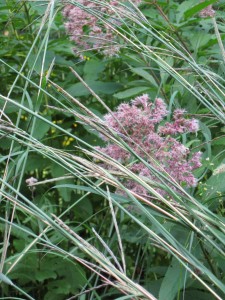

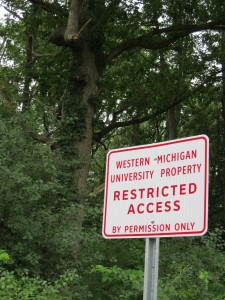

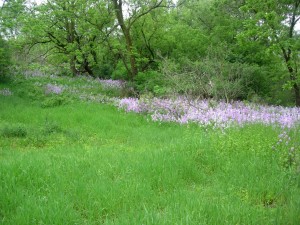


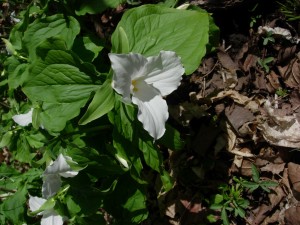


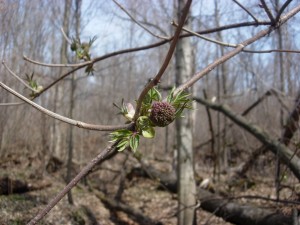



 The Herald correctly
The Herald correctly